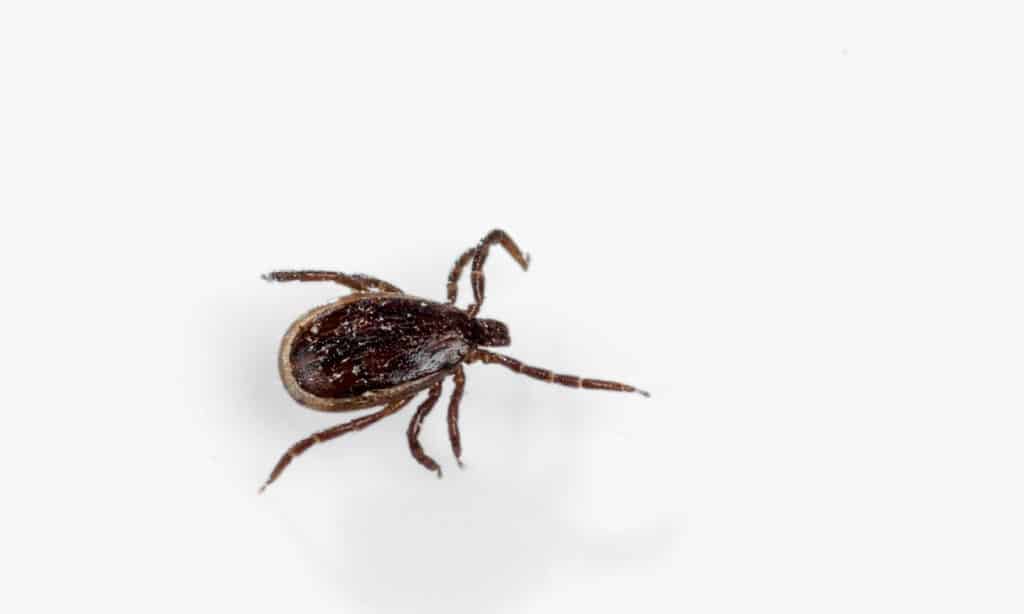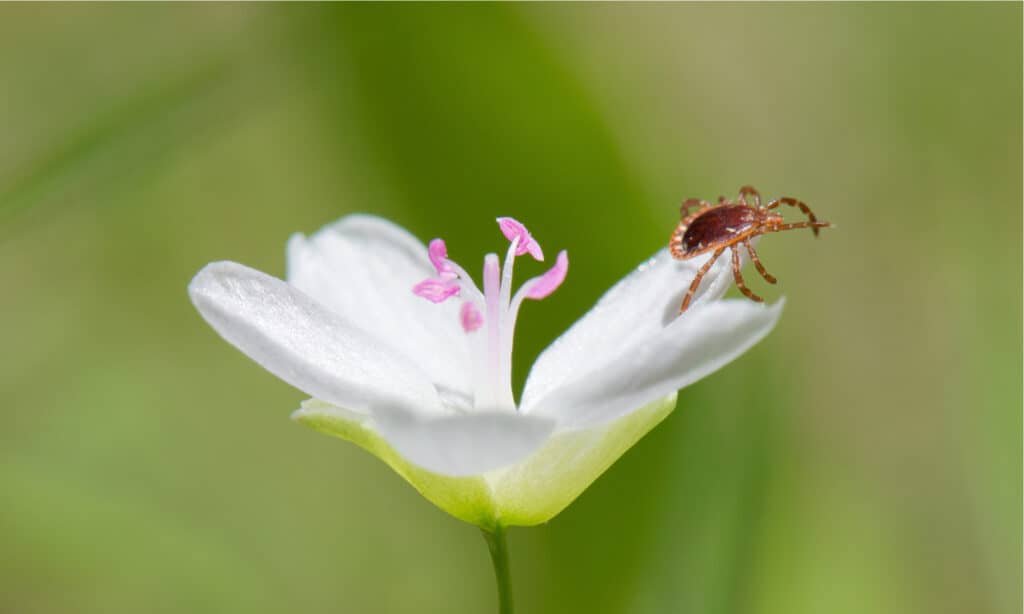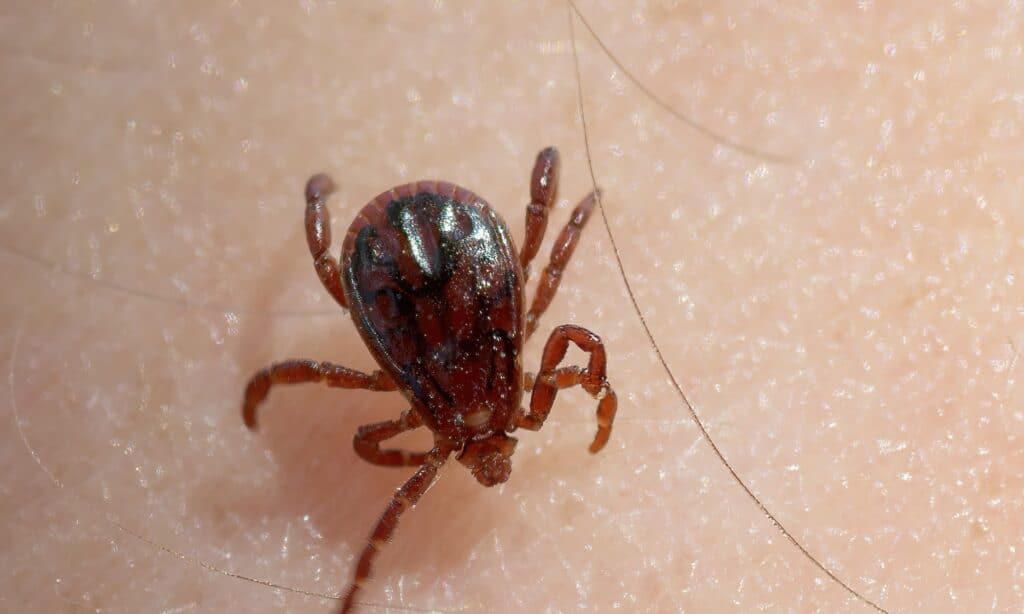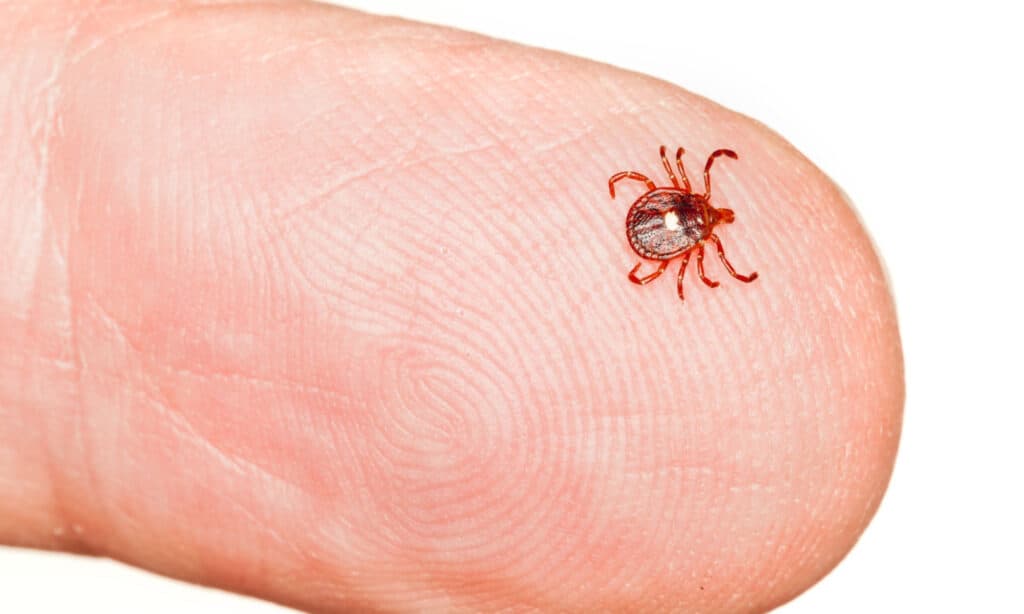The ticks in New York are parasitic arachnids, not insects. They’re related to other arachnids, like spiders, mites, and scorpions. Unlike other arachnids though, ticks get 100% of their dietary needs from one thing: blood. That’s right; ticks are the vampires of the arachnid world. They can get their blood from just about any creature, warm or cold-blooded. Depending on the species of tick, and what stage of life it’s in, they may or may not prey on humans. When a tick bites a human, it has the potential to spread infectious diseases directly into the blood.
That’s why it’s so important to understand what kind of ticks in New York you might run into. Here, we’ll take a look at all the types of ticks found in this northeastern state, and how to identify them. We’ll go over each species’ favorite hosts, and what diseases and pathogens each tick carries. After that, we’ll go over the worst times of year for ticks in New York, and how to avoid having one of these tiny draculas latch onto you.
Winter Tick

The winter tick rarely feeds on humans.
©iStock.com/VladK213
Also known as the moose tick, the winter tick lives throughout North America. These ticks in New York are very unlikely to bite humans; they prefer larger mammals, like deer, elk, and moose. Winter ticks are single-host ticks, which means that they have only one host for all three of their life stages (larva, nymph, adult). Because of this, they can infest a single animal so heavily that the host actually dies from anemia.
Winter ticks in New York have long, oval bodies with red-brown legs. Females have dark red-brown bodies with a tan scutum (the round shield over their shoulders). Males have mottled tan and red-brown bodies.
American Dog Tick

The American dog tick is one of the most common ticks in the United States.
©Doug Lemke/Shutterstock.com
American dog ticks in New York play host to the pathogens that cause tularemia, canine tick paralysis, and Rocky Mountain spotted fever (RMSF). In fact, these ticks are the number one transmitter of RMSF to humans. They’re also known as wood ticks, though they prefer living in fields over forests.
The American dog tick is larger than any other species of ticks in New York. It has red-brown body and red-brown legs, with large, visible mouthparts. Females have red-brown bodies with tan scuta, while males have all over tan bodies with some red-brown mottling.
Lone Star Tick

Lone star ticks get their name from the single spot on the female’s back.
©Shooty Photography/Shutterstock.com
Lone star ticks are some of the most common ticks in New York. They frequently bite humans. Lone star ticks are vectors for RMSF, monocytic ehrlichiosis, and Stari borreliosis. Their bite can even lead to the host developing a red meat allergy. These ticks don’t just feed on humans though, they also consume the blood of dogs, coyotes, white-tailed deer, cows, and other medium to large mammals.
Female lone star ticks are easy to identify by the pinprick of tan in the center of their back. Other than that, their bodies and legs are uniformly light red-brown, with large mouthparts. Males lack the dot but have some dark brown mottling on their backs.
Deer Tick

Known commonly as the black-legged tick, this tick is perhaps the most worrisome of all.
©KPixMining/Shutterstock.com
Deer ticks in New York are known to bite both humans and dogs. They’re the only tick in New York capable of spreading Lyme disease, an insidious bacterial infection that can lead to chronic pain and illness in victims. The deer tick’s favorite host is the white-tailed deer, but they’ll also feed on raccoons, foxes, squirrels, mice, skunks, and other mammals.
Deer ticks are the only ticks in New York that have black legs. Females have highly distinct orange-brown bodies, with dark brown scuta and large mouthparts. Males lack the distinct orange-brown color, instead having dark brown bodies with a ring of tan around the margin.
Brown Dog Tick

One of two types of dog tick, the brown dog tick lives all over the world.
©iStock.com/RobertAx
Brown dog ticks in New York primarily bite dogs. They can transmit RMSF, canine ehrlichiosis, and canine babesiosis, but only to dogs. These ticks rarely bite humans, preferring instead our furry companions. They’re found anywhere there are dogs or even domestic livestock. Unlike all the other ticks in New York, the brown dog tick actually spends its entire lifecycle indoors.
Male and female brown dog ticks are almost indistinguishable from one another. Both have long, narrow, light brown bodies and small mouthparts. Their scuta are not discernable, and they have no identifying markings or mottling. If you find a tick on your dog, and you haven’t been outdoors lately, it’s almost certainly a brown dog tick.
When is Tick Season in New York?
If you’re looking to avoid ticks in New York, don’t go outdoors in the spring, early summer, or fall. Since that’s a little too restrictive for most people, the next best thing you can do is learn how to avoid ticks.
How to Avoid Ticks in New York

The first step to avoiding ticks in New York is to stay out of thick underbrush, tall grass, and leaf litter on forest floors.
©Steve Heap/Shutterstock.com
Ticks in New York are here to stay, and unless you want to live your life like a hermit, you better learn to avoid them. One of the first steps you can take is wearing long pants and long-sleeved shirts—for double protection, tuck your pants into your socks and your shirt into your pants. Bug spray is an effective deterrent against ticks, particularly if it contains permethrin. Use caution with all insect repellent though, it should never be sprayed directly on your skin, only on your clothing.
Thank you for reading! Have some feedback for us? Contact the AZ Animals editorial team.








